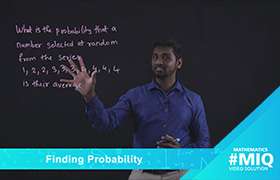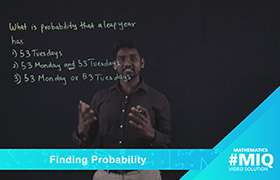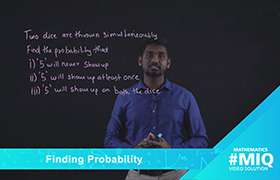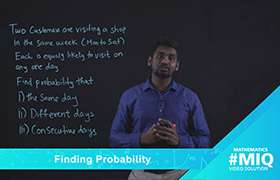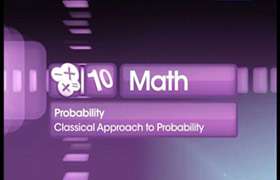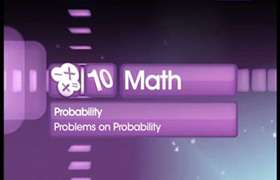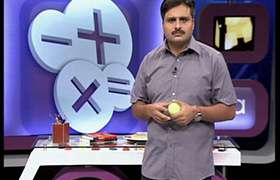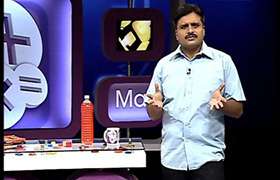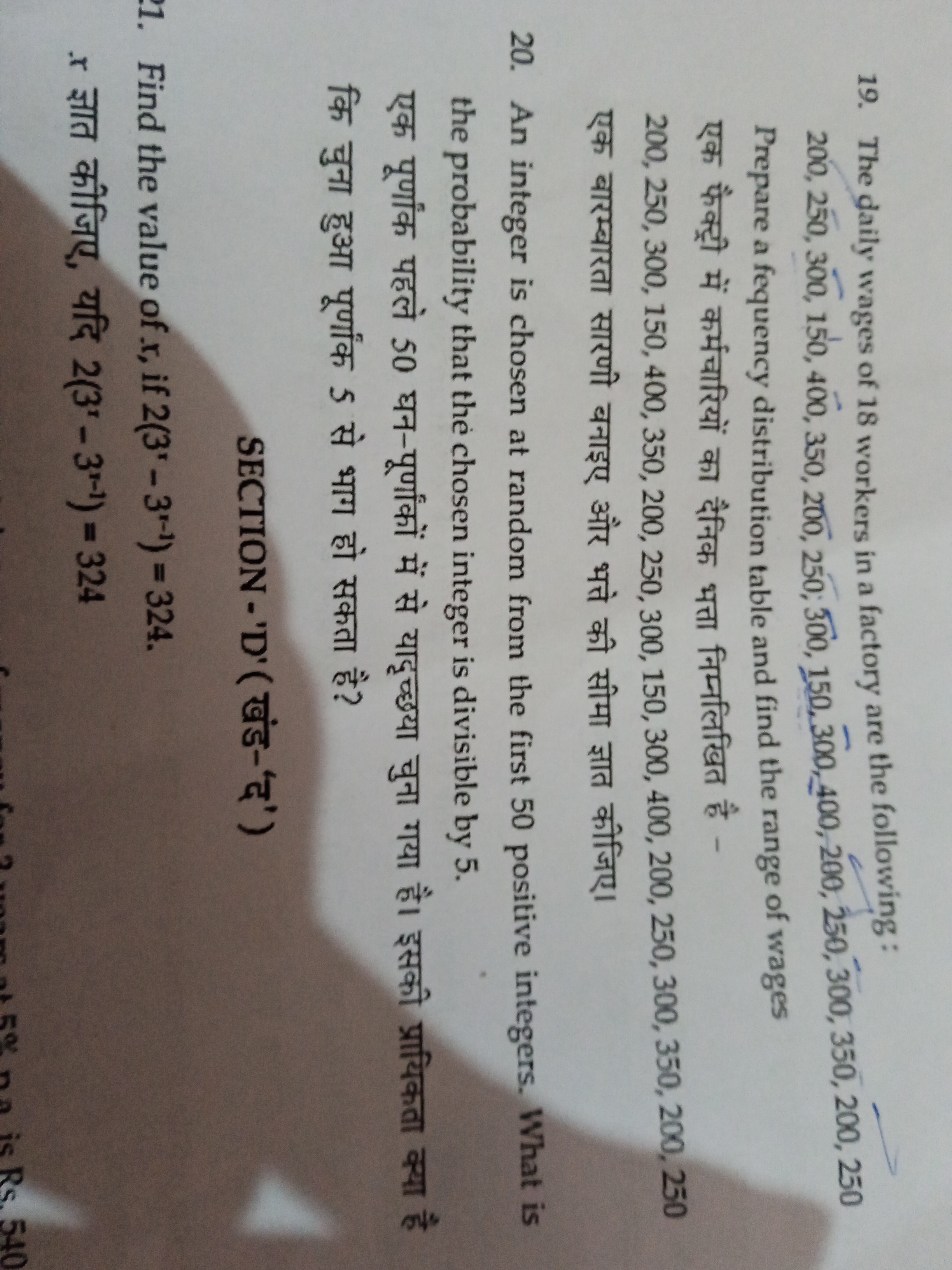CBSE Class 10 Answered
when two coins are tossed simultaneously, under P(at most one head), what all possible outcomes shall come under it and why?......i have seen the video but i am still confused
Asked by | 12 Oct, 2012, 07:59: PM
When two coins are tossed simultaneously then the possible outcomes obtained are HH, HT, TH, and TT}. Here H denoted head and T denotes tail.
Therefore, a total of 4 outcomes obtained on tossing two coins simultaneously.
Consider the event of obtaining at most one head. At most one head is obtained means either no head is obtained or one head is obtained.
The outcome(s) favourable to no head obtained is {TT}
The outcome(s) favourable to one head obtained is {HT, TH}
Therefore, the event of obtaining at most one head has 3 favourable outcomes. These are TT, HT and TH.
Therefore, the probability of obtaining at most one head = 3/4.
Answered by | 12 Oct, 2012, 11:28: PM
Application Videos
Concept Videos
CBSE 10 - Maths
Asked by aadityaanand2008 | 02 Jan, 2023, 11:22: PM
CBSE 10 - Maths
Asked by kavitajasmine12345 | 02 Jan, 2022, 11:45: AM
CBSE 10 - Maths
Asked by Trisha Gupta | 23 Sep, 2021, 06:57: AM
CBSE 10 - Maths
Asked by shwetarai12345678910 | 12 Oct, 2020, 06:24: AM
CBSE 10 - Maths
Asked by acshanadhana15 | 06 Aug, 2020, 01:53: PM
CBSE 10 - Maths
Asked by drhimasingh | 09 Mar, 2020, 11:06: AM
CBSE 10 - Maths
Asked by officialmehak26 | 03 Feb, 2020, 03:02: PM
CBSE 10 - Maths
Asked by officialmehak26 | 02 Feb, 2020, 08:08: PM

